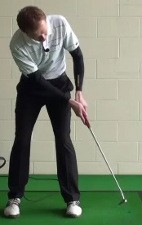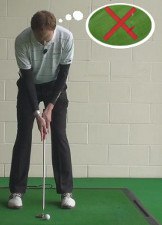
Golf is a game of compensations. When you make a mistake, it’s human nature to try something different the next time. Sometimes it works, but other times you actually make the problem worse.
A prime example often plays out on the green. The golfer who rolls his first putt several feet past the hole becomes gun-shy, then leaves the
comeback putt short. It’s an especially common scenario when the first putt is downhill and the second putt, uphill. When gravity conspires with shaky nerves, the result is rarely good.
How do you avoid coming up short on comebackers? Here are a few tips:

- Be aware of the slope: Sometimes golfers fail to recognize that they’re putting downhill; sometimes the green disguises this fact. If you’re not certain, take a look at your line from the side, crouching down to determine whether you’re putting with the slope or against it. This will boost your chances of getting the correct speed; when you do run one past going downhill, you’ll know to hit the comebacker a bit harder.
- Stay in the moment, part I – watch putts roll out: Many golfers instinctively look away in disgust when smacking the ball too far, or close their eyes after a putt grazes the hole. It’s best to keep your wits and watch the ball as it rolls by; you’ll get a sense for the slope and any break that might affect your next one.
- Stay in the moment, part II – put the first putt in the past: In football, they say the best cornerbacks are those with short memories. The same mentality helps in golf. Once you’ve rapped that first effort 5 feet by, don’t dwell on it. Focus on redeeming yourself by making the next one. In fact, think of the ” comebacker as an opportunity to build your confidence – knock it in and you’ll float off the green with your head held high.

Stroke it short and firm: When we’re timid, we tend to decelerate the putter head through the ball. Drill more comebackers with a short back-stroke and a long follow-through.





